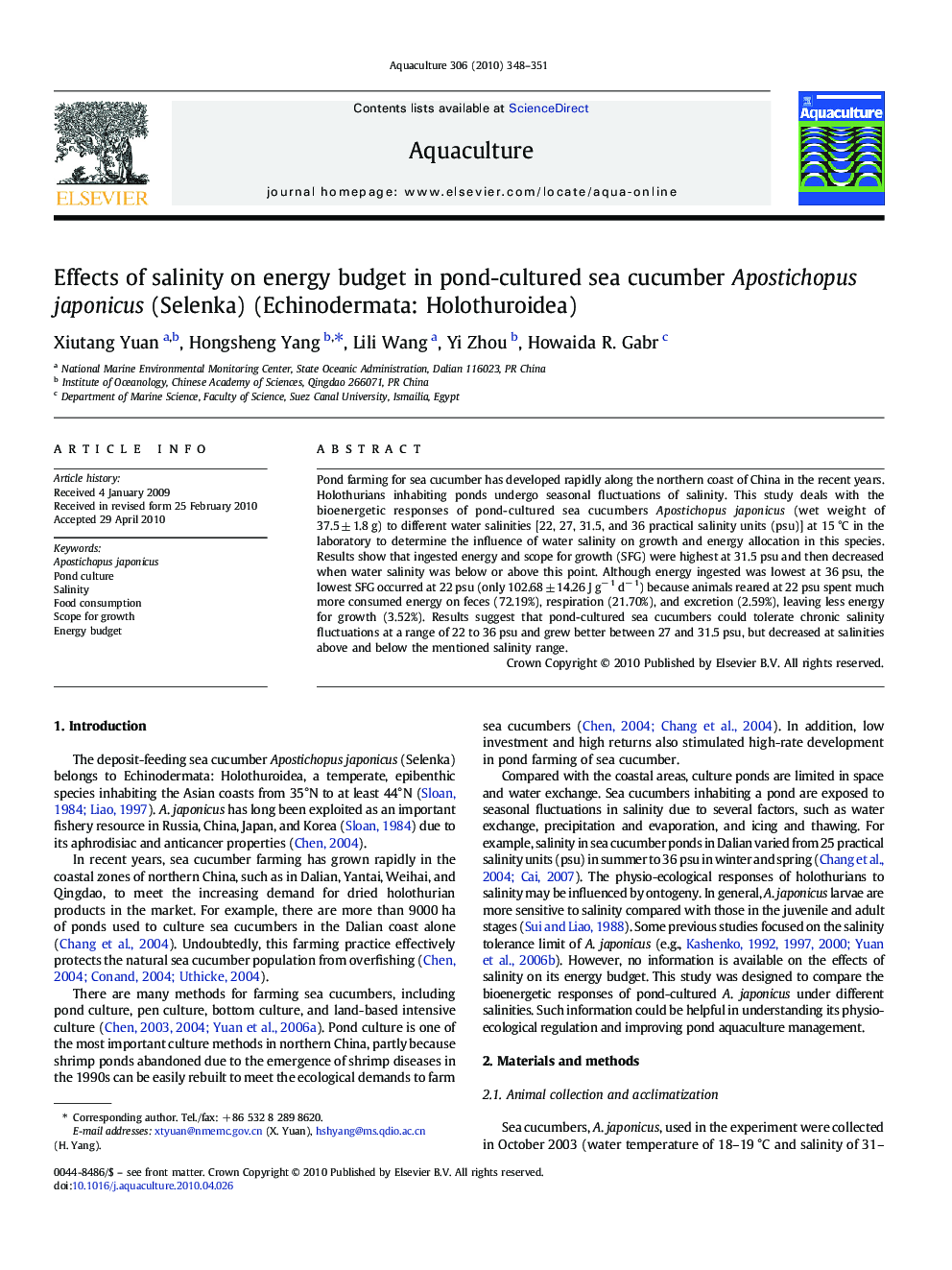| Article ID | Journal | Published Year | Pages | File Type |
|---|---|---|---|---|
| 2423622 | Aquaculture | 2010 | 4 Pages |
Pond farming for sea cucumber has developed rapidly along the northern coast of China in the recent years. Holothurians inhabiting ponds undergo seasonal fluctuations of salinity. This study deals with the bioenergetic responses of pond-cultured sea cucumbers Apostichopus japonicus (wet weight of 37.5 ± 1.8 g) to different water salinities [22, 27, 31.5, and 36 practical salinity units (psu)] at 15 °C in the laboratory to determine the influence of water salinity on growth and energy allocation in this species. Results show that ingested energy and scope for growth (SFG) were highest at 31.5 psu and then decreased when water salinity was below or above this point. Although energy ingested was lowest at 36 psu, the lowest SFG occurred at 22 psu (only 102.68 ± 14.26 J g− 1 d− 1) because animals reared at 22 psu spent much more consumed energy on feces (72.19%), respiration (21.70%), and excretion (2.59%), leaving less energy for growth (3.52%). Results suggest that pond-cultured sea cucumbers could tolerate chronic salinity fluctuations at a range of 22 to 36 psu and grew better between 27 and 31.5 psu, but decreased at salinities above and below the mentioned salinity range.
